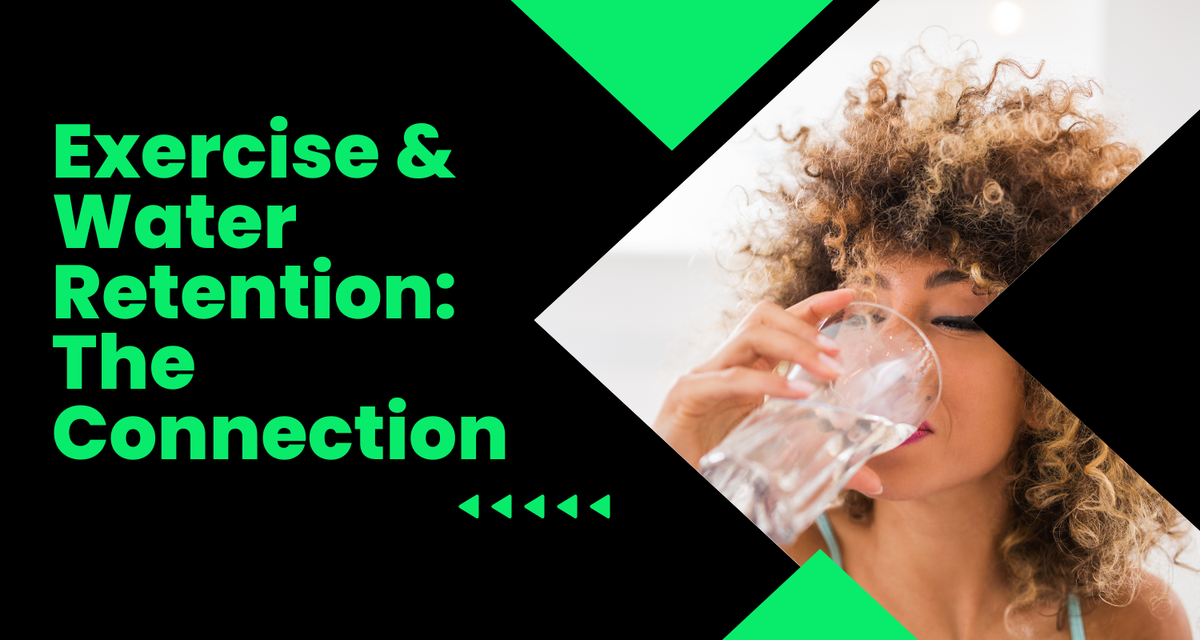Exercise and Water Retention: Exploring the Connection

Water retention, also known as edema, can be a common concern for many individuals, leading to discomfort and swelling.
While various factors contribute to water retention, exercise can play a significant role in managing this condition.
In this article, we'll delve into the relationship between exercise and water retention, exploring its impact, best exercises, and lifestyle factors to consider.
Understanding Water Retention
Water retention occurs when excess fluid builds up in the body's tissues, leading to swelling and bloating, particularly in the hands, feet, ankles, and legs.
This condition can be caused by factors such as hormonal changes, dietary choices, medications, and underlying health conditions.
Impact of Exercise on Water Retention
Positive Effects
Regular exercise can help alleviate water retention by promoting circulation and lymphatic drainage, which aids in flushing out excess fluids from the body.
Additionally, certain types of exercise, such as cardiovascular workouts and strength training, can improve overall blood flow and reduce swelling in affected areas.
Potential Causes of Increased Water Retention
While exercise can be beneficial for managing water retention, certain factors may exacerbate this condition.
Over-training, poor hydration, and excessive sodium intake are common culprits that can lead to increased fluid retention despite engaging in physical activity.
Best Exercises to Reduce Water Retention
Cardiovascular Exercises
Cardiovascular exercises, such as walking, jogging, cycling, and swimming, are excellent choices for reducing water retention.
These activities elevate the heart rate and promote sweating, helping the body eliminate excess fluids and toxins.
Strength Training
Incorporating strength training exercises, such as squats, lunges, and resistance band workouts, can also aid in reducing water retention.
Building muscle mass improves circulation and metabolism, leading to better fluid balance in the body.
Flexibility Exercises
Practicing yoga, Pilates, or other flexibility exercises can be beneficial for reducing water retention and improving overall mobility.
These activities promote relaxation and stress reduction, which can help alleviate swelling and fluid retention.
Hydration and Its Role in Water Retention
Proper hydration is essential for maintaining fluid balance in the body and preventing water retention.
Drinking an adequate amount of water throughout the day helps flush out toxins and excess fluids, reducing the risk of edema.
Lifestyle Factors Affecting Water Retention
In addition to exercise, several lifestyle factors can influence water retention.
Limiting sodium intake, avoiding prolonged sitting or standing, and elevating the legs periodically can all help reduce swelling and discomfort associated with water retention.
Conclusion
Exercise plays a crucial role in managing water retention by promoting circulation, lymphatic drainage, and overall fluid balance in the body.
Incorporating cardiovascular, strength training, and flexibility exercises into your routine can help alleviate swelling and discomfort associated with edema.
Remember to stay hydrated, monitor sodium intake, and listen to your body's signals to optimize the benefits of exercise in managing water retention.
